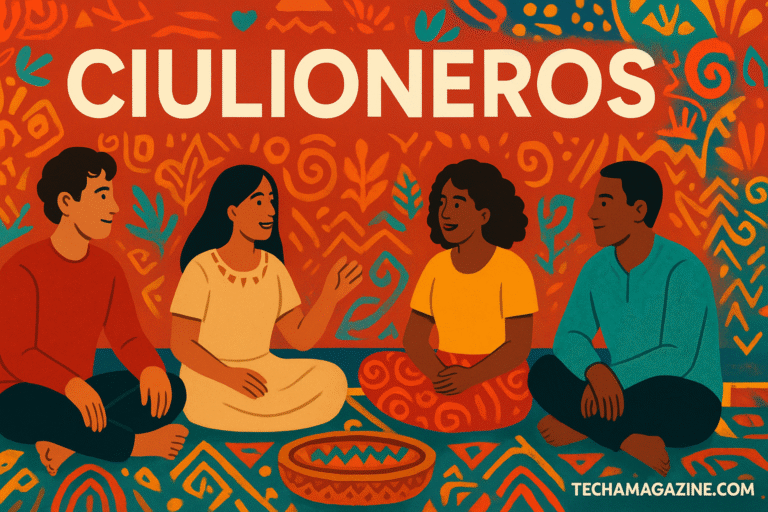Ciulioneros: Exploring History, Culture & Creative Identity
In a world where culture is often simplified or diluted, Ciulioneros stands out as a vivid tapestry woven from deep traditions, artistic innovation, and communal identity. Whether seen through dance, craft, story or festival, Ciulioneros is more than cultural heritage—it’s a living expression of how communities remember, adapt, and create. This article dives into the origins, symbolism, modern forms, and the ongoing relevance of Ciulioneros today.
Origins and Etymology of Ciulioneros
The exact meaning and linguistic root of Ciulioneros is not universally agreed upon, but it is believed to have centuries-old origins. Some historians and scholars suggest:
-
It may come from indigenous dialects mixed over time with colonial languages.
-
The term has been associated with local groups who performed ritual dance, storytelling, or craft as a way to preserve identity.
-
Over time, Ciulioneros has acquired multiple layers of meaning—not just referring to people, but to the creative practices, symbolic forms, and collective memory connected to a place or people.
Traditional Practices and Cultural Significance
Dance, Music & Storytelling
One core aspect of Ciulioneros is performance: dance, chant, music, or ritual storytelling. These are often tied to seasonal cycles (harvest, rain, renewal) or sacred communal events. Instruments can be traditional drums, flutes, stringed instruments, while movement and costume carry symbolic weight.
Art, Craft & Textile Motifs
Artisans create textiles, carvings, murals using local materials. Patterns may include spirals, diamonds, eyes, natural elements (leaves, roots), each with meaning—growth, protection, ancestry.
Festivals, Rituals & Community Life
Ciulioneros traditions often emerge most vividly in festivals or celebrations—harvest festivals, rituals for nature, community gatherings. Such events reinforce collective identity and offer space for intergenerational exchange.
Spiritual beliefs are often intertwined: respect for ancestors, nature-spirits, rituals that affirm balance between environment and human life.
Modern Evolution & Adaptations
Culture doesn’t stay static. Ciulioneros has evolved in many ways:
-
Urban & Digital Expression: Younger generations are bringing Ciulioneros into street art, social media, fashion, and digital arts—reviving motifs in new media.
-
Hybrid Identities: Blends of colonial, indigenous, and modern global influences means Ciulioneros identity is fluid. People may incorporate western dress, modern music, yet maintain symbolic craft, ritual, or storytelling.
-
Conservation & Revival Movements: Efforts by cultural groups, educational institutions, and artisans to document patterns, oral history, musical forms. Some festivals, workshops help preserve knowledge.
Challenges Facing Ciulioneros Today
-
Globalisation & Cultural Assimilation: Western mainstream culture, media, commercial pressures may dilute authenticity.
-
Loss of Traditional Skills: Crafts and oral storytelling require hands-on teaching; fewer young people are learning old techniques.
-
Environmental Pressures: Change in climate, deforestation or land development can affect access to natural materials used in crafts and rituals.
-
Misrepresentation & Commercial Exploitation: Risk that elements of Ciulioneros get commodified or misappropriated without respect for source communities.
Why Ciulioneros Still Matters in 2025
-
Cultural Identity: For many communities and diaspora, it is a source of pride and belonging.
-
Artistic Inspiration: Motifs and traditions of Ciulioneros inspire contemporary artists, designers, musicians globally.
-
Sustainability & Slow Living: Their crafts and lifestyle emphasize sustainable materials, slowing down, living connected to nature.
-
Dialogue & Healing: In an age of social fragmentation, Ciulioneros offers stories, rituals, collective spaces to heal, connect.
Conclusion
Ciulioneros is a multifaceted symbol—of heritage, artistic expression, community, and creativity. Its roots may lie in ancient custom, but its branches are growing in modern soils of youth culture, digital media, and cross-cultural exchange. In 2025 and beyond, Ciulioneros reminds us that culture is not static; it lives, adapts, and inspires. Celebrating it authentically can enrich not just the communities that originated it, but all of us who cherish identity, art, and the stories that shape who we are.
FAQs on Ciulioneros
1. What exactly does the term “Ciulioneros” refer to?
Ciulioneros generally refers to cultural groups or movements known for combining traditions of art, storytelling, craft, dance, and rituals. It is not limited to one region. Its precise meaning depends on cultural context.
2. Where do Ciulioneros traditions originate?
Their origins are mixed—some from indigenous and tribal cultures, some from rural folk rituals, and some developed through colonial influence and cultural blending.
3. Are there different regional versions of Ciulioneros?
Yes. Different communities emphasize different crafts, musical styles, festivals, patterns in textiles, depending on local environment, history, and materials.
4. How is Ciulioneros relevant to younger generations?
Younger people incorporate its symbols in digital arts, fashion, social media, seeking connection to heritage while expressing modern identity.
5. How can Ciulioneros culture be preserved?
Through education, documentation (video, audio, text), festivals, mentorship from elders, ethical collaborations, legal protections, and community empowerment.
